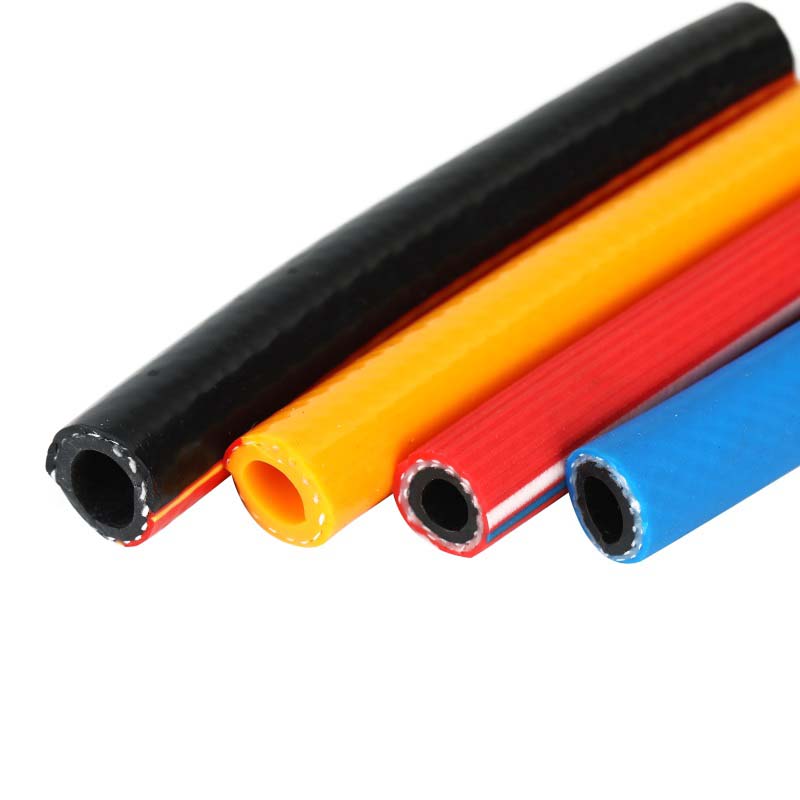Understanding Pressure Ratings for Braided PVC Hoses in Various Applications
Understanding Braided PVC Hose Pressure Rating
Braided PVC hoses are widely used in various industrial and domestic applications due to their versatility, flexibility, and resistance to abrasion. One of the most critical aspects to consider when selecting a braided PVC hose is its pressure rating. The pressure rating indicates the maximum pressure that the hose can safely withstand while still maintaining its integrity. In this article, we will explore the importance of pressure ratings in braided PVC hoses, how they are determined, and the factors that influence these ratings.
What is Braided PVC Hose?
Braided PVC hose is composed of a flexible polyvinyl chloride (PVC) material reinforced with a woven layer of polyester or other synthetic fibers. The combination of PVC and the braided reinforcement makes these hoses particularly strong, durable, and suitable for various applications. They are commonly used in agricultural, construction, and manufacturing sectors as well as for water supply, air supply, and chemical transfer.
Importance of Pressure Ratings
Selecting a hose with the appropriate pressure rating is crucial for safety and performance. If a hose is subjected to pressures that exceed its rating, it may burst, leading to potential injury, equipment damage, or hazardous leaks of fluids or gases. For instance, in applications such as hydraulic systems or industrial machinery, the failure of a hose can result in downtime and costly repairs.
Pressure ratings are typically expressed in pounds per square inch (PSI) or in bars. A higher pressure rating means the hose can handle greater internal pressure without failure. When selecting a braided PVC hose, it is vital to evaluate the operational pressure of the system and choose a hose with a pressure rating that exceeds this value to ensure safety and reliability.
How Pressure Ratings are Determined
The pressure rating of a braided PVC hose is determined through rigorous testing procedures. Manufacturers subject the hoses to various conditions, including temperature variations, pressure cycling, and environmental exposure, to evaluate their performance. These tests help in establishing maximum operating limits, taking into consideration the materials used, the construction design, and the intended application of the hose.
Additionally, industry standards and regulations play a role in determining the pressure ratings. Organizations such as the American Society for Testing and Materials (ASTM) and the International Organization for Standardization (ISO) provide guidelines that manufacturers should adhere to, ensuring that products meet safety and performance criteria.
braided pvc hose pressure rating

Factors Affecting Pressure Ratings
Several factors can influence the pressure ratings of braided PVC hoses
. These include1. Temperature The pressure rating can decrease at elevated temperatures. Hoses rated for high pressures at ambient temperatures may not maintain the same rating when exposed to heat.
2. Age and Wear Over time, exposure to elements, chemicals, and physical stress can degrade the materials, lowering the hose's pressure rating.
3. Quality of Manufacturing The quality of the materials and the standards used during the manufacturing process can greatly impact the pressure rating. Higher quality hoses are often more reliable.
4. Bending Radius A sharp bend can increase stress on the hose, potentially affecting its pressure rating. It’s crucial to adhere to the recommended bending radius provided by the manufacturer.
5. External Factors Chemicals, sunlight, and other environmental conditions can also affect the durability and pressure rating of braided PVC hoses.
Conclusion
When selecting a braided PVC hose for your specific application, understanding the pressure rating is essential for ensuring safe and efficient operation. Always consider the working pressure of your system, alongside the temperature, environmental conditions, and the expected lifespan of the hose. By choosing the right hose based on its pressure rating, you can enhance the reliability of your systems, minimize the risk of accidents, and ensure a longer lifespan for your equipment.
-
Unrivaled Performance and Applications of PU Pneumatic Hoses and TubesNewsJun.11,2025
-
The Transparent World of Industrial Tubing and Hosing SolutionsNewsJun.11,2025
-
The Intricate World of Pneumatic Conduits: Tubes and HosesNewsJun.11,2025
-
The Dynamic Landscape of Pneumatic Conduits: Unraveling Key ComponentsNewsJun.11,2025
-
The Diverse Applications and Significance of Transparent PVC TubingNewsJun.11,2025
-
High - Pressure Pneumatic Tubing and Systems: An In - Depth LookNewsJun.11,2025














